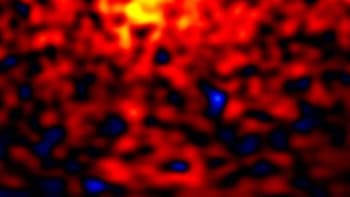Astronomers have observed X-rays and visible light from two short gamma-ray bursts for the first time. The observations suggest that the bursts are caused by the collision of two neutron stars, or a neutron star and a black hole.

Although gamma-ray bursts were first observed more than 30 years ago, they are still not fully understood. Often described as the most powerful explosions in the universe, they have durations that range from about one hundred seconds to just a few milliseconds. The initial burst of gamma rays is followed by an “afterglow” of longer wavelength radiation that can last for weeks or even years.
Astronomers now believe that “long” gamma-ray bursts – bursts that last more than two seconds – happen when a massive star undergoes a supernova explosion at the end of its life and collapses to form a black hole. However, the afterglow of a short gamma-ray burst had not been seen at optical or X-ray wavelengths until earlier this year.
George Ricker of the Massachusetts Institute of Technology and colleagues detected a gamma-ray burst lasting just 70 milliseconds on 9 July this year with the HETE-II satellite (Nature 437 855). The burst, known as GRB 050709, was followed by a fainter X-ray afterglow that Derek Fox of the California Institute of Technology and co-workers captured with the Chandra space telescope (Nature 437 845). The Chandra data allowed the position of the burst to be located which, in turn, enabled Jens Hjorth of the University of Copenhagen and co-workers to see it at visible wavelengths. Hjorth and colleagues used the Danish 1.54-m telescope at the European Southern Observatory in Chile for these observations (Nature 437 859).
GRB 050709 lies some 2400 million light years from Earth at the edge of a young star-forming dwarf galaxy. All three teams believe that the gamma-ray burst may be a result of the merger of two neutron stars – extremely dense stars that are heavier than the Sun, even though they measure just tens of kilometres across – or a neutron star and a black hole. The astronomers have also ruled out alternative sources such as flares from highly magnetized neutron stars or the collapse of a massive star.
Meanwhile, Neil Gehrels of the NASA Goddard Spaceflight Center and co-workers detected the X-ray afterglow from another short burst, GRB 050509B, with the SWIFT satellite on 9 May (Nature 437 851). These observations pinpointed the origin of the burst as an elliptical galaxy about 2700 million light years away. Since elliptical galaxies are usually rich in binary systems of stars, this adds weight to the theory that collisions involving neutron stars are responsible for short gamma-ray bursts.
The astronomers have shown that these short bursts are about a thousand times fainter than long gamma-ray bursts, even though they are ten times closer to the Earth.



